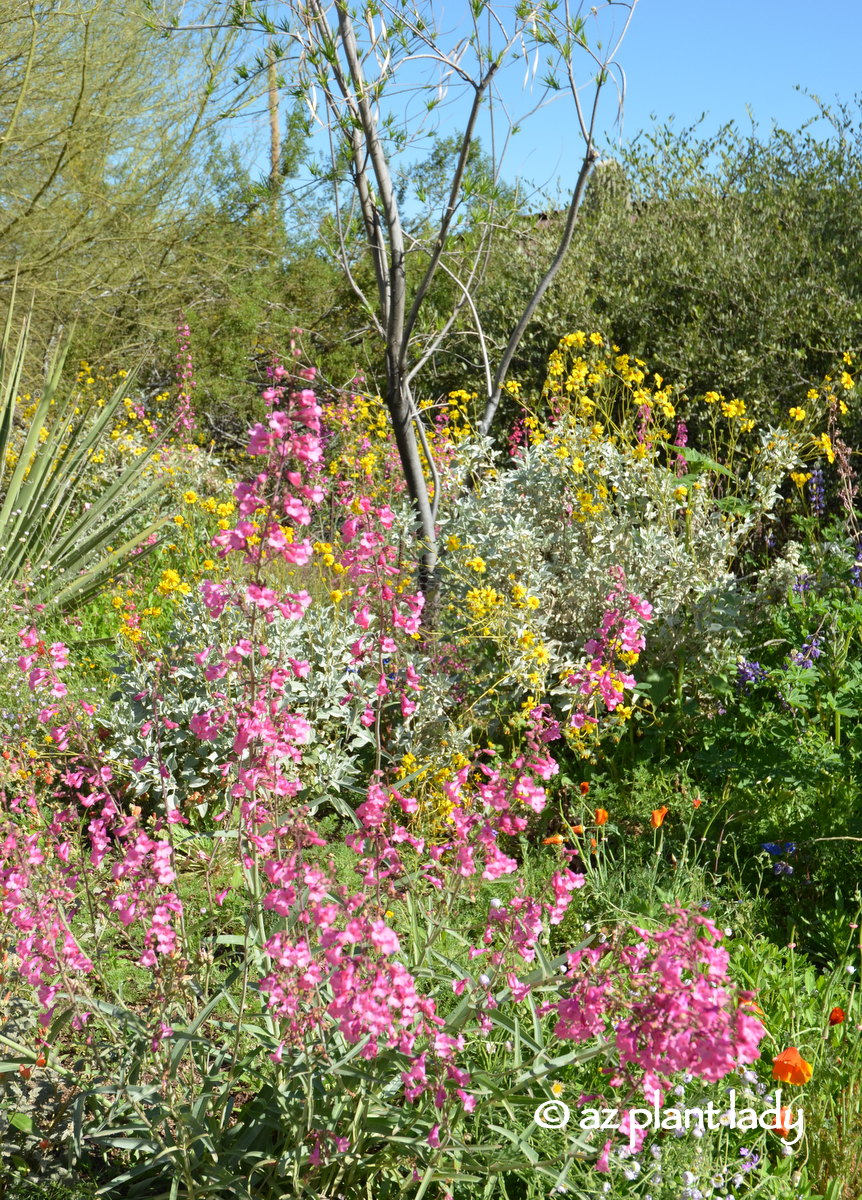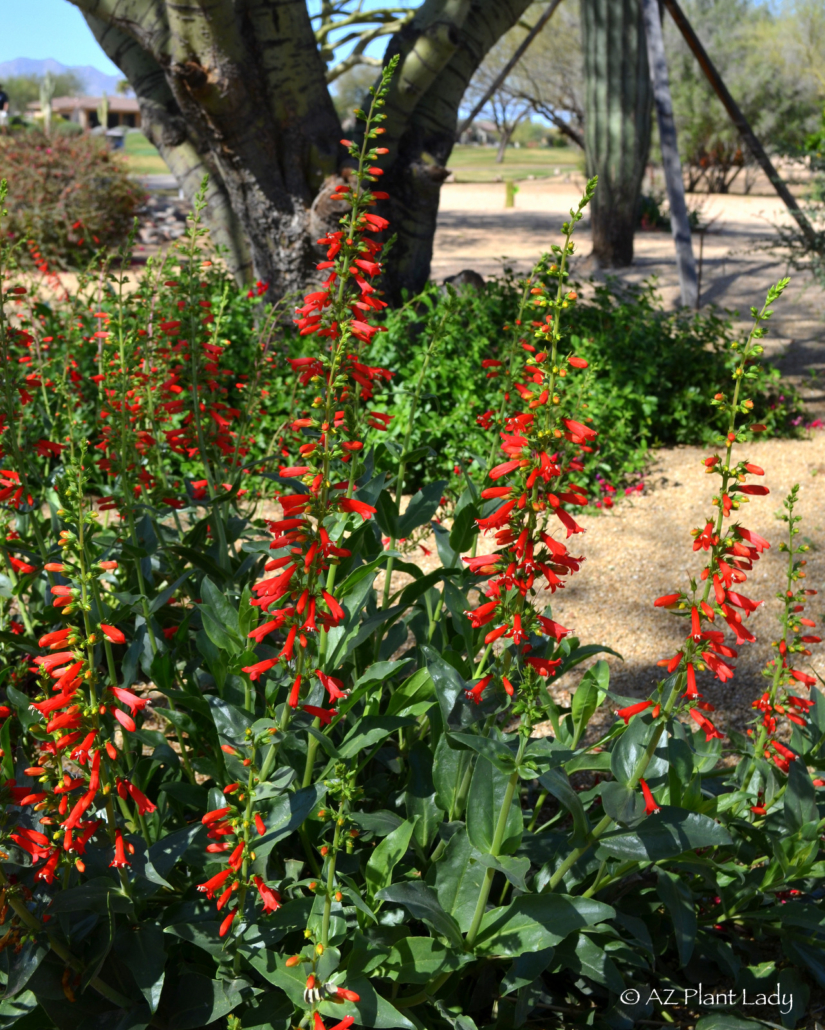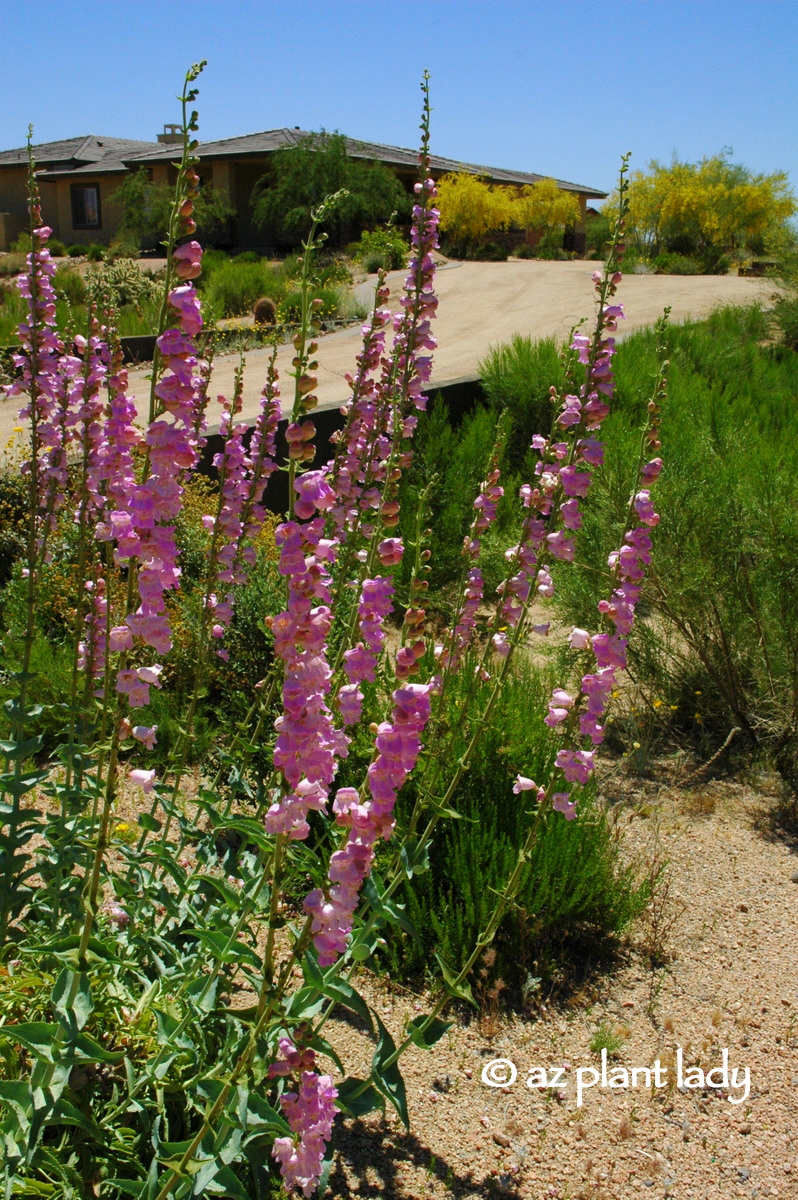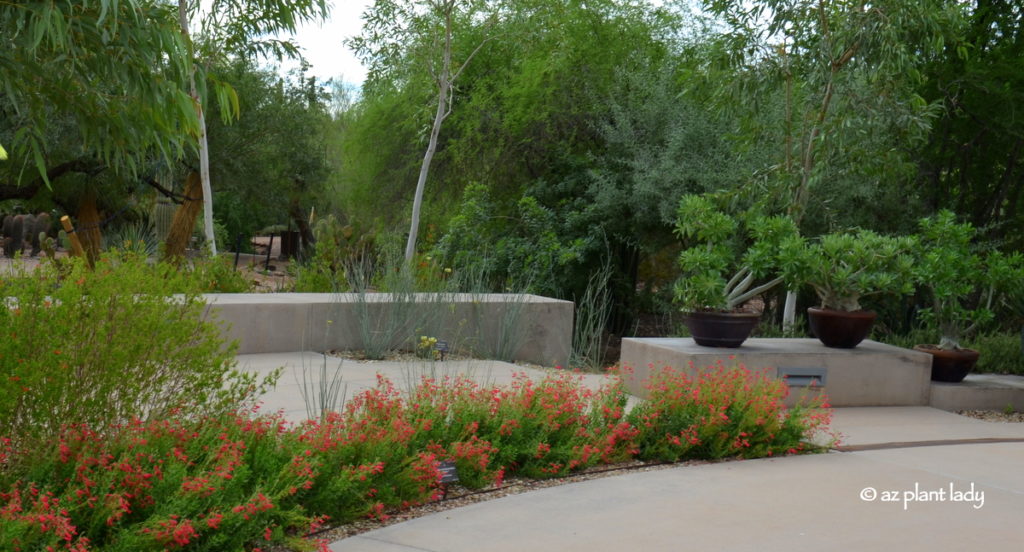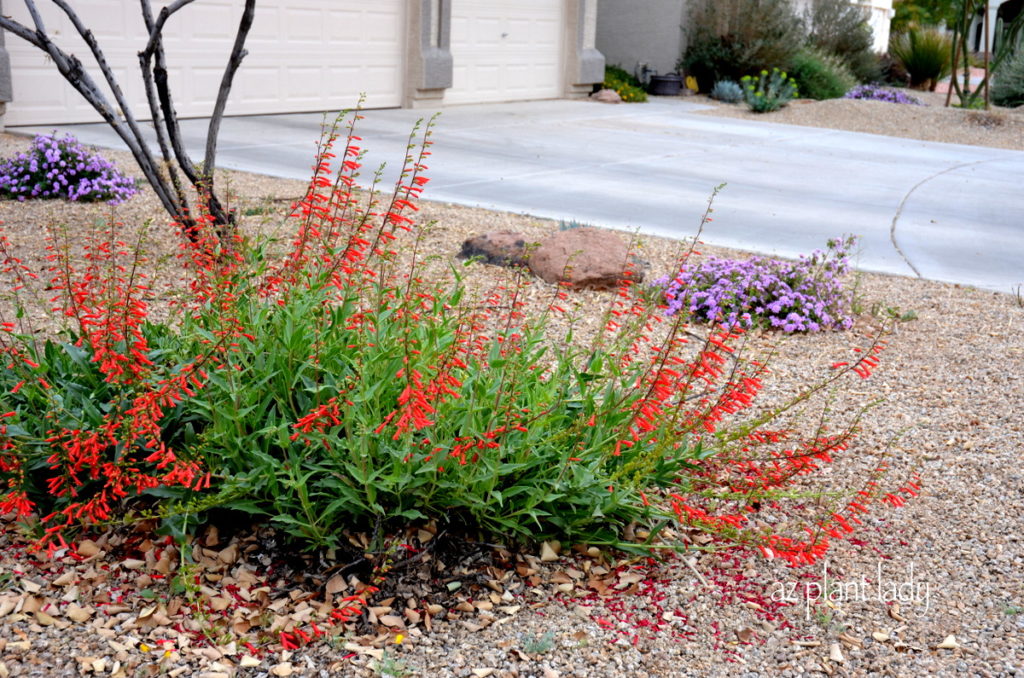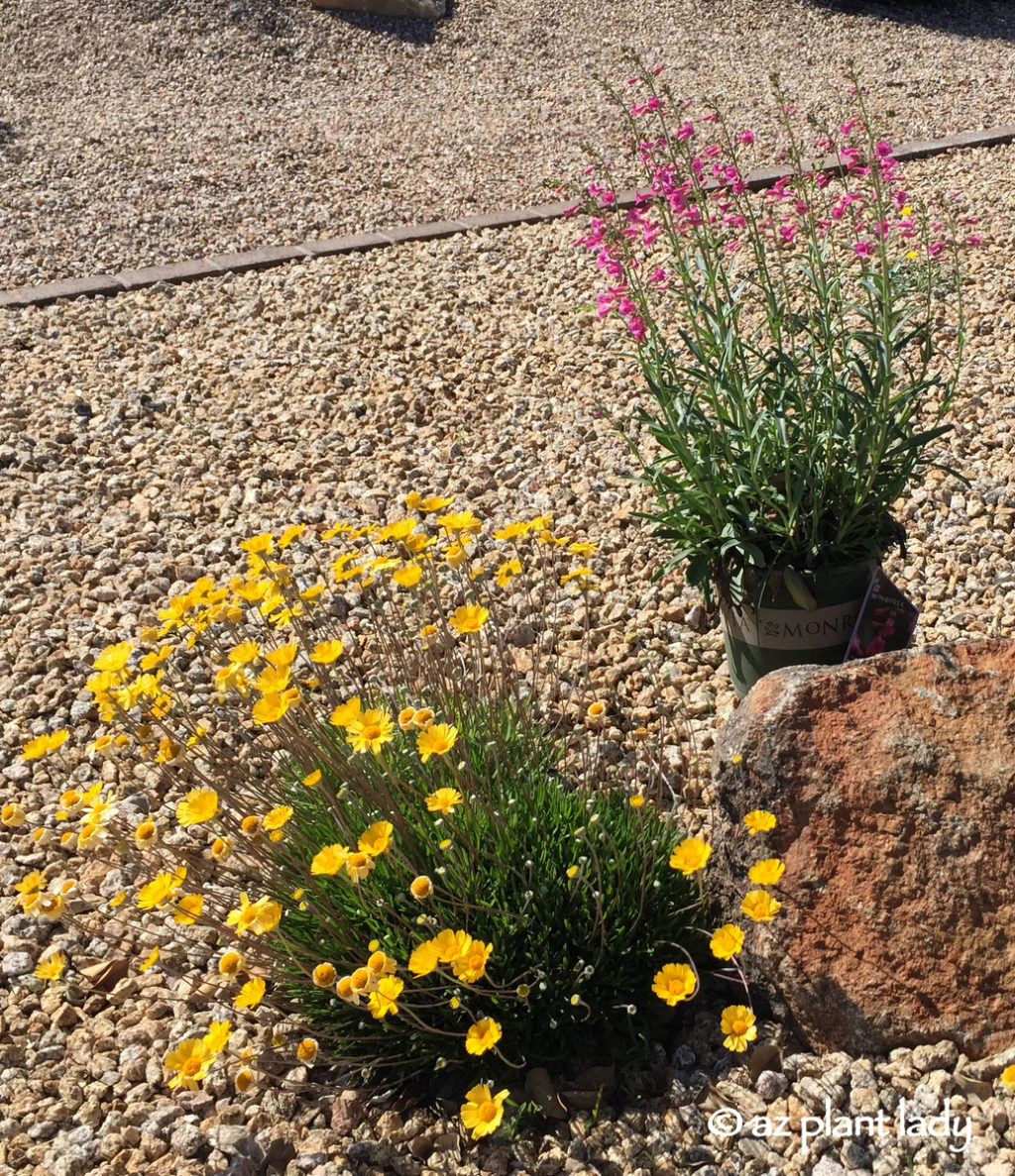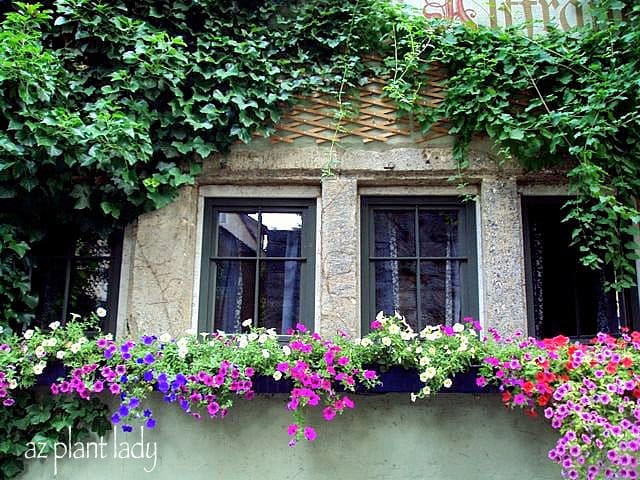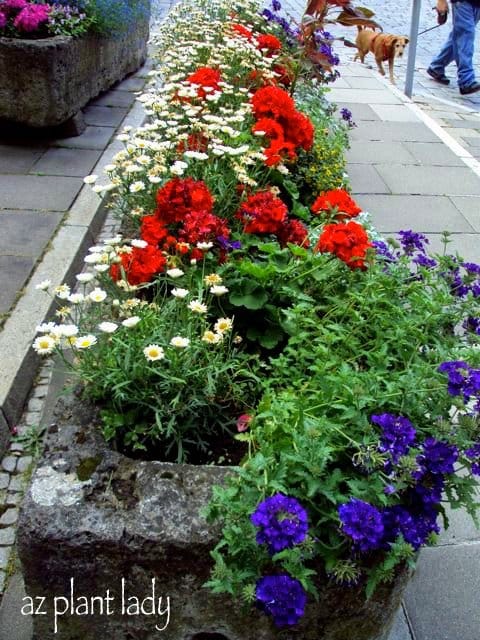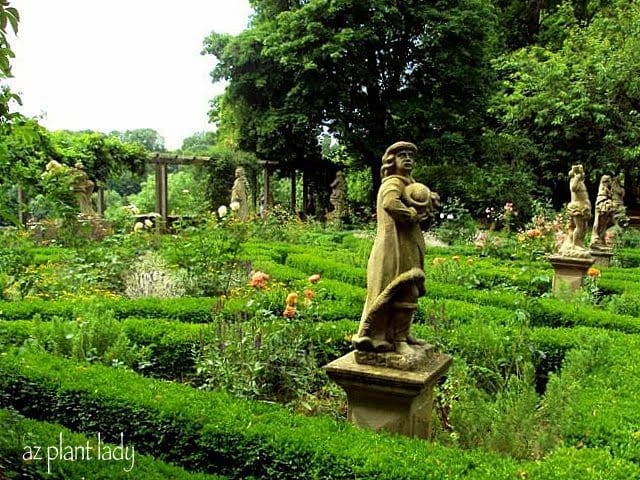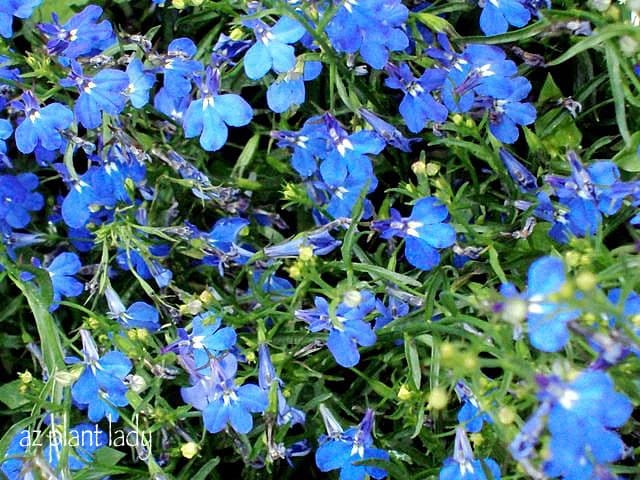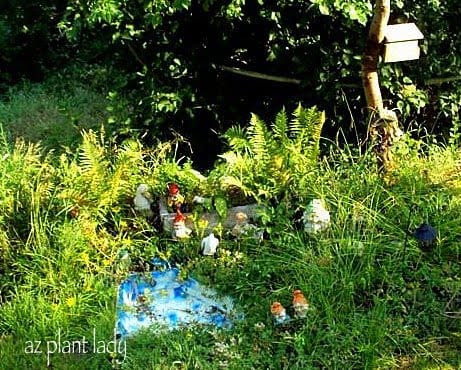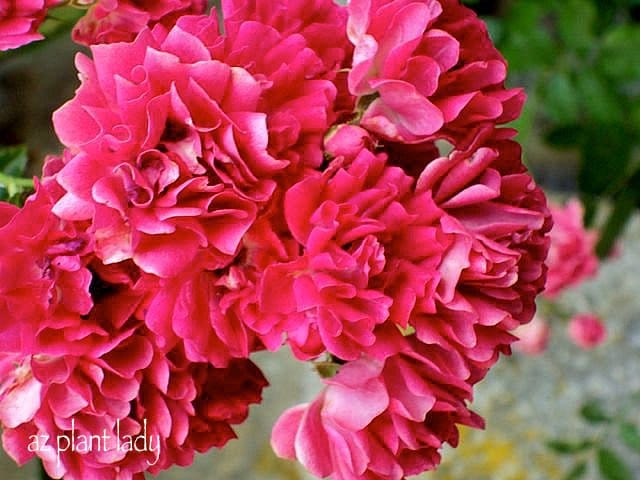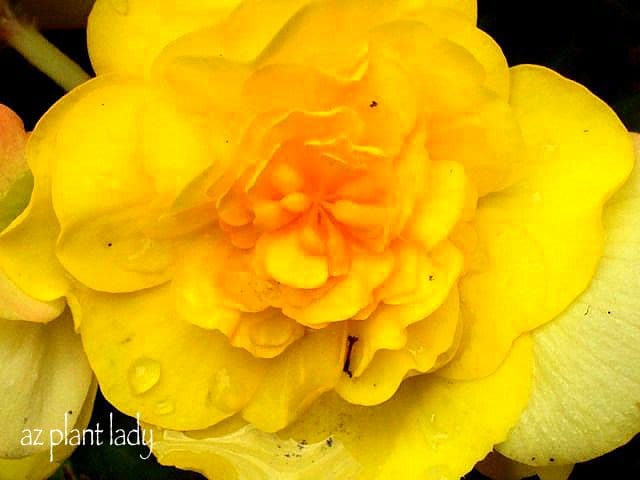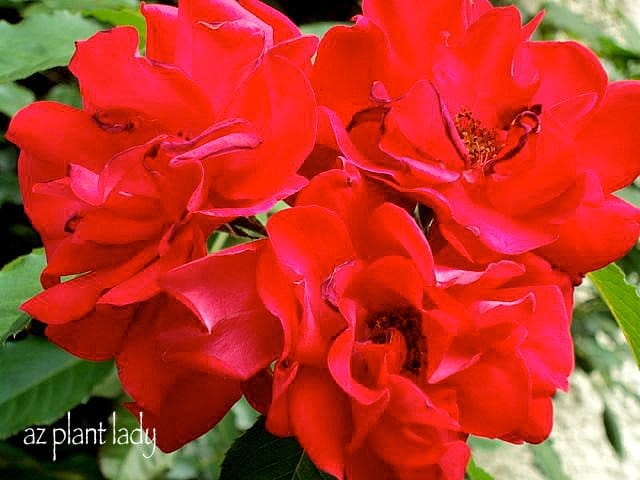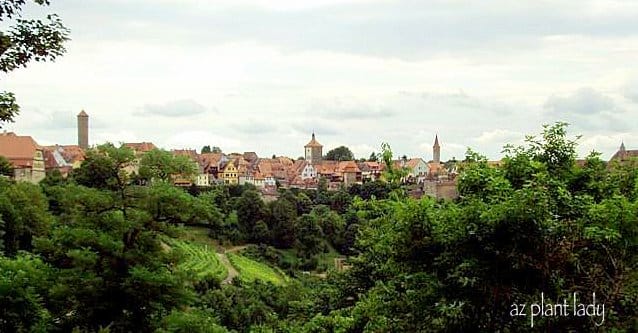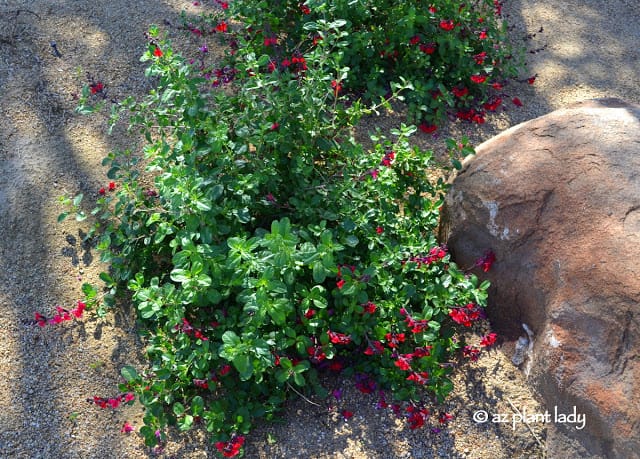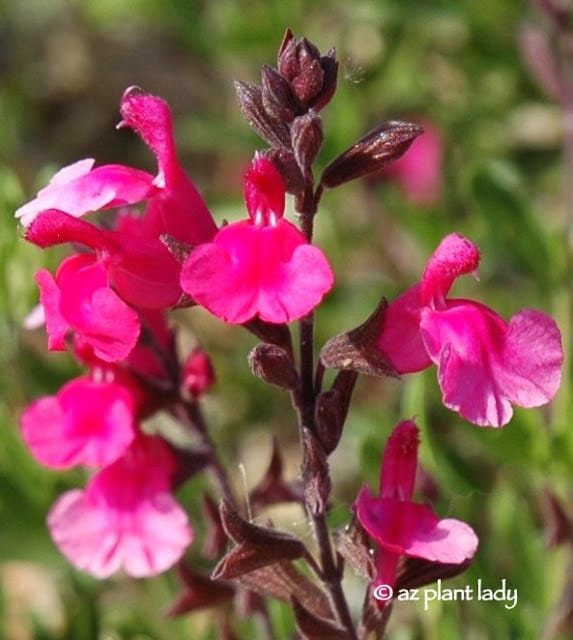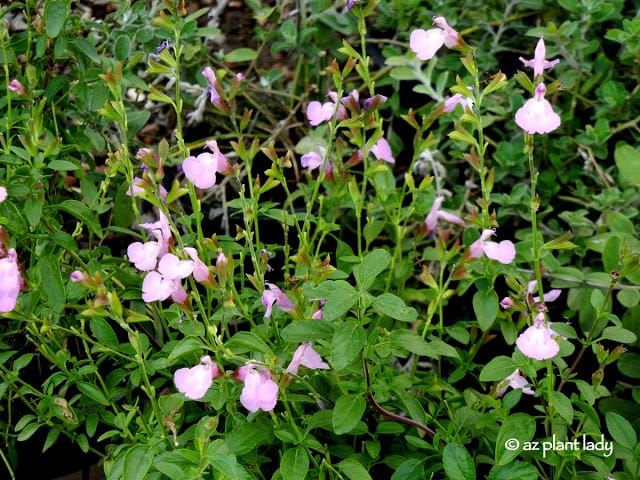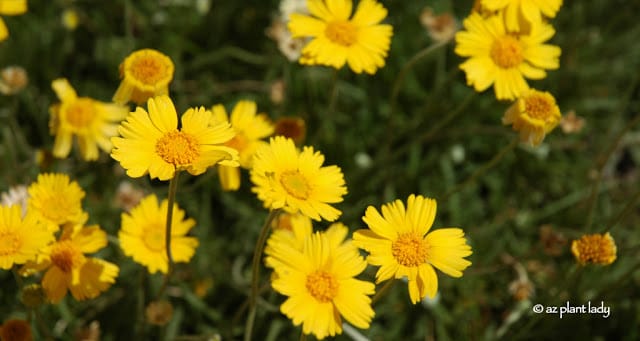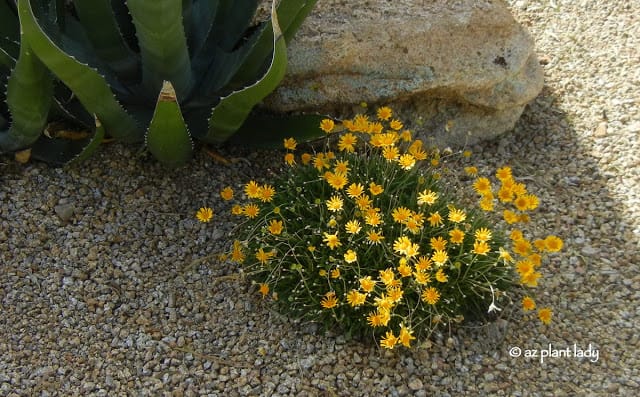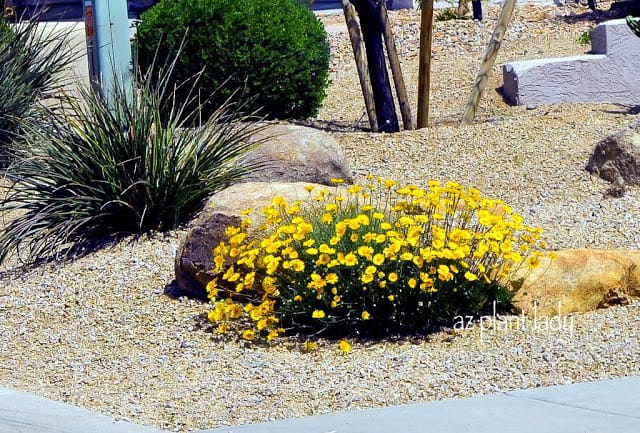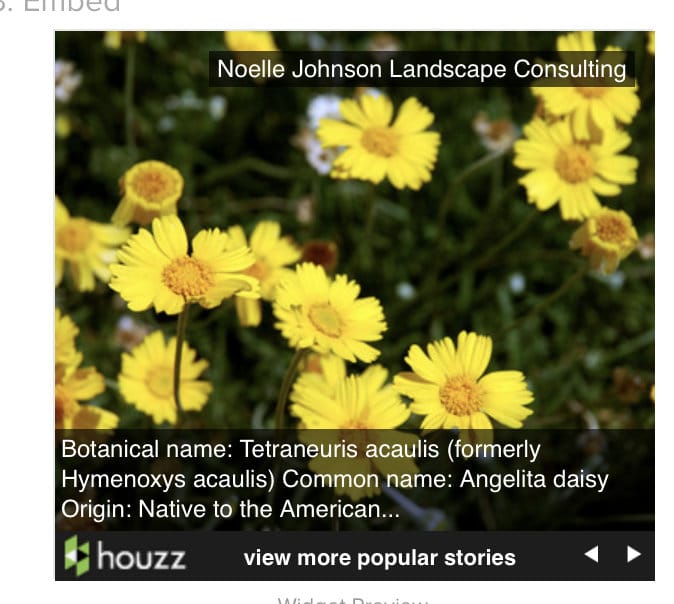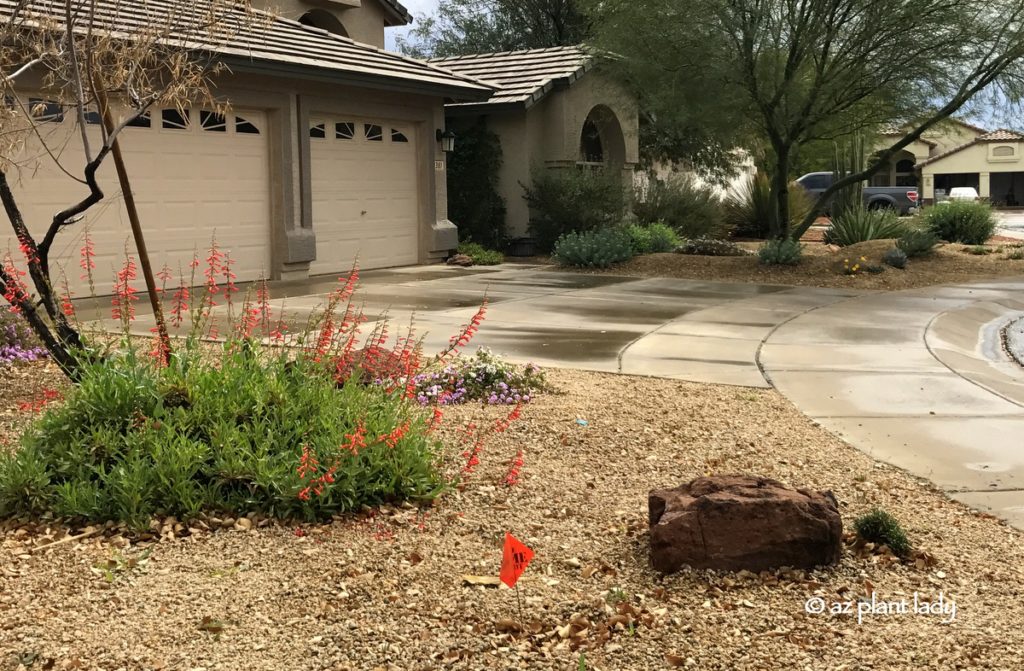
Winter Garden, The vibrant flowers of firecracker penstemon (Penstemon eatoni) add a welcome splash of color during winter and into spring.
People often ask me to post more photographs of my garden on my blog. I must confess that I am sometimes reluctant to do so as I wonder if they expect a ‘perfect’ garden – one that is meticulously maintained and expertly designed.
However, I decided that would show you my garden, even if it bursts a few bubbles of what people expect it to look like.
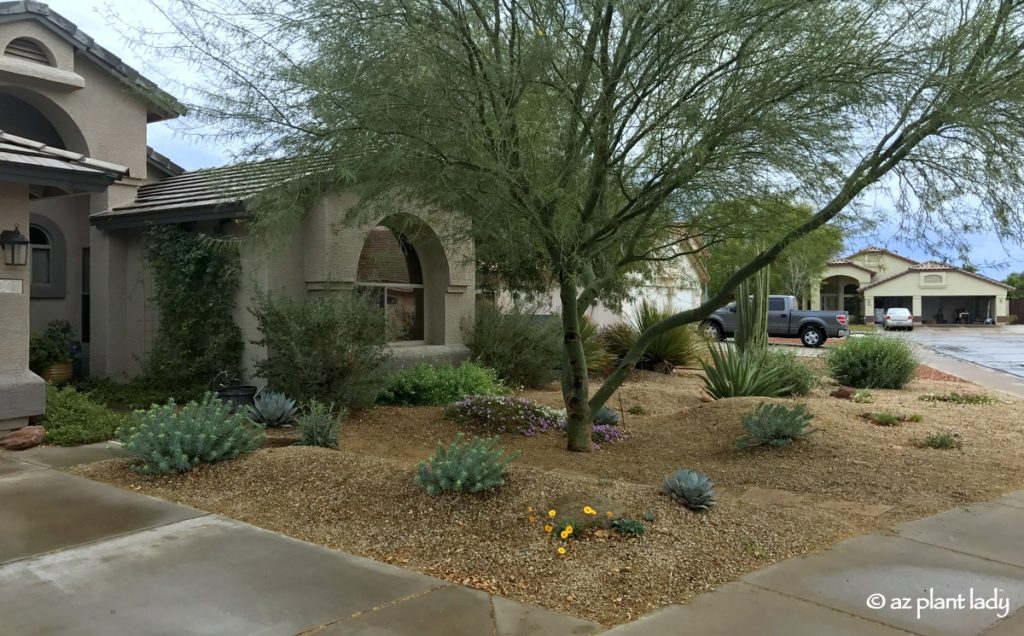
The yellow flowers of angelita daisy contrast with the cool colors of purple and white trailing lantana. Gopher plants (Euphorbia rigida) are getting ready to produce chartreuse-colored flowers.
The landscape that surrounds my home reflects my love for plants that add beauty without needing much attention from me. I don’t tend to rake or blow my leaves and the plants are allowed to grow into their natural shapes without much interference from me.
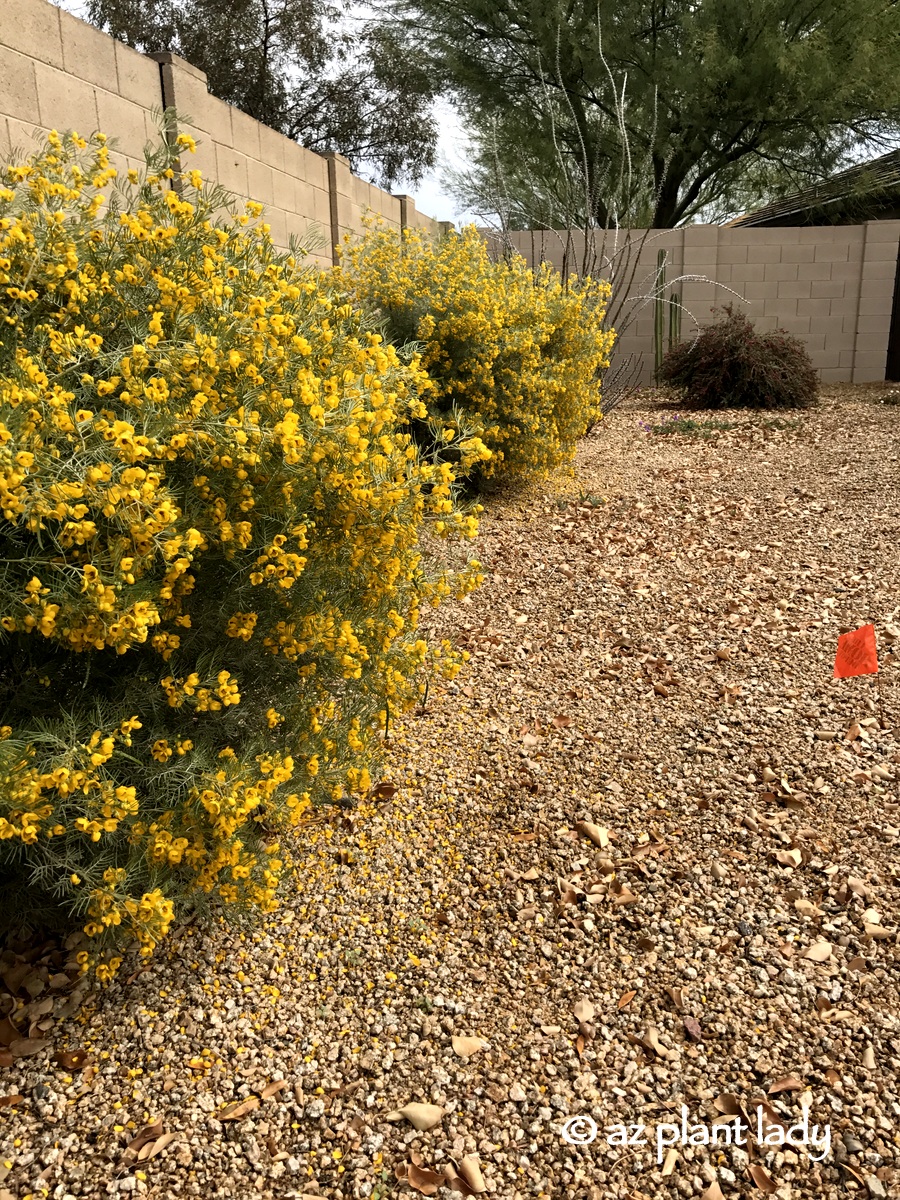
The fragrant blossoms of feathery cassia (Senna artemisiodes) add visual warmth to the winter landscape.
That is important because I am usually so busy helping others with their landscapes, that I often don’t have enough time to fuss over mine. Pruning once, or at most, twice a year is my standard of a fuss-free plant.
I love color throughout all seasons. So, you are just as likely to find as much color in my winter garden as in the summer.
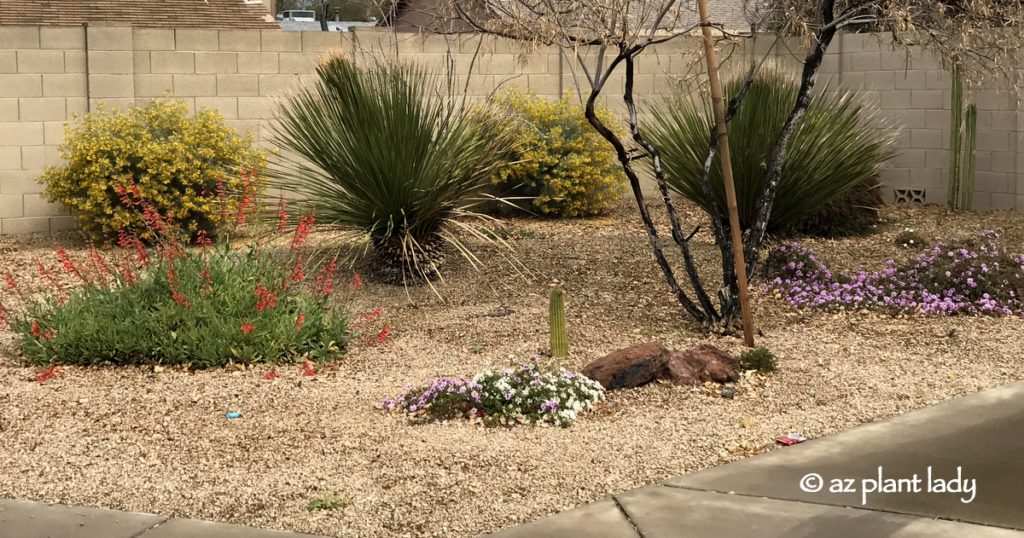
Green desert spoon (Dasylirion texanum) add spiky texture contrast to the landscape.
As for the design of my garden, horticulturists are by nature, collectors of plants. This means that we likely to include many different kinds of plants – often more than you would see in a well-designed garden.
I do enjoy designing landscapes and have done my best in designing my own garden, while incorporating a large variety of plants.
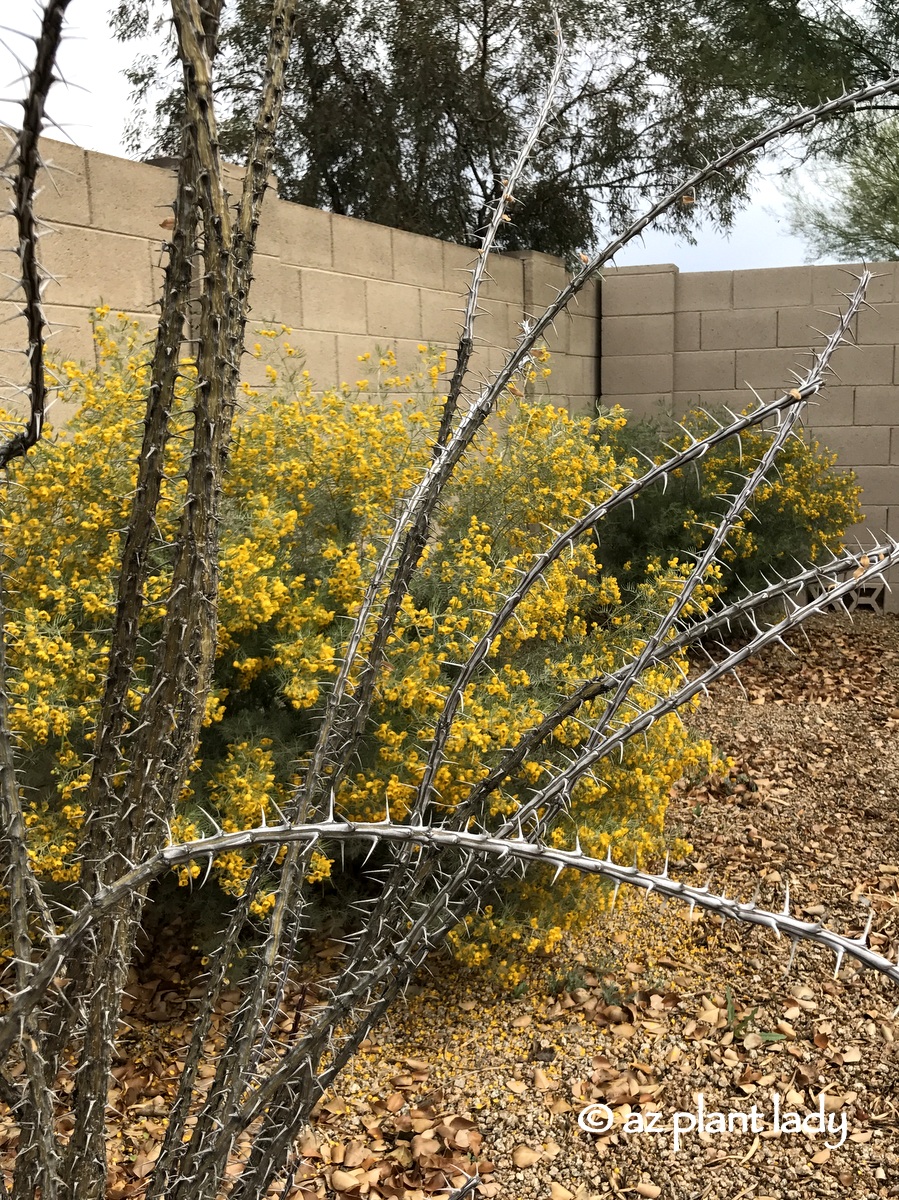
The leafless canes of an ocotillo will soon leaf out with the arrival of spring.
I’ve always felt that a garden should reflect the owner’s personality while also enhancing the exterior of their home. Mine shows my love for color and low-maintenance beauty.
What does your garden reveal about you?
Colorless Winter Garden ? No Way!

